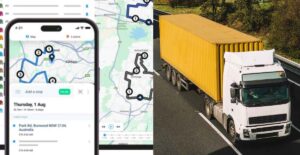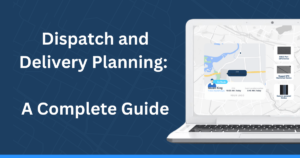Remember when logistics was all about spreadsheets and gut feelings? Not anymore – artificial intelligence (AI) is the new powerhouse in logistics and supply chain management.
Chris Caplice, the MIT Center for Transportation and Logistics’ executive director, succinctly sums it up: “AI is a moving target.”
AI in logistics: More than fancy algorithms
First, we need to understand the distinction between the previous iteration of AI and the current advancements. Before generative AI, we had discriminative AI.
This type of AI excels at classifying data and making specific predictions based on input, but it has strict parameters. Think of it as an ‘either/or’ model, making ‘yes’ or ‘no’ decisions based on the data it has learned.
The most popular example of this is email spam filters.
Then there’s generative AI, the recent iteration taking the world by storm. It also uses large language models to create new content and solve complex problems.
But where discriminative makes simple ‘yes’ or ‘no’ decisions, generative AI can generate new, original outputs based on what it has learned.
How can this be applied to logistics and supply chain management?
AI solving real-world logistical challenges
Let’s examine some of the problems AI is tackling.
Lior Ron, founder and CEO of Uber Freight, identifies several key challenges:
- Fragmented supply chains: AI is used to connect networks and optimize outcomes.
- Market volatility: Manages rapid changes in pricing and service disruptions.
- Safety concerns: Addresses issues ranging from COVID-19 mitigation to driver safety and digital fraud prevention.
- Environmental impact: AI reduces the carbon footprint of trucking and freight operations.
Uber Freight’s algorithmic carrier pricing system, for example, provides upfront guaranteed pricing for trucking and freight. This eliminates the uncertainty in price estimation.
By optimizing route design, Uber Freight’s AI also reduced empty miles from an average of 30% to between 10% and 15%.
Benefits of AI
At MIT, the Intelligent Logistics Systems Lab is advancing the field even further. But how does this benefit businesses in the logistics industry?
By combining traditional AI, generative AI, and operations research, researchers can tackle complex routing problems.
In addition, continuous learning allows these models to adapt automatically to policy changes. In short, they eliminate the need for problem-specific algorithms.
“What we see is that initially, AI is taking a subordinate role, but as we advance through, we’re starting to see it take more of a primary role,” Caplice said.
“Eventually, we’d like to see the generative AI take over and solve larger parts of that problem.”
About the author
Cheryl has contributed to various international publications, with a fervor for data and technology. She explores the intersection of emerging tech trends with logistics, focusing on how digital innovations are reshaping industries on a global scale. When she's not dissecting the latest developments in AI-driven innovation and digital solutions, Cheryl can be found gaming, kickboxing, or navigating the novel niches of consumer gadgetry.












